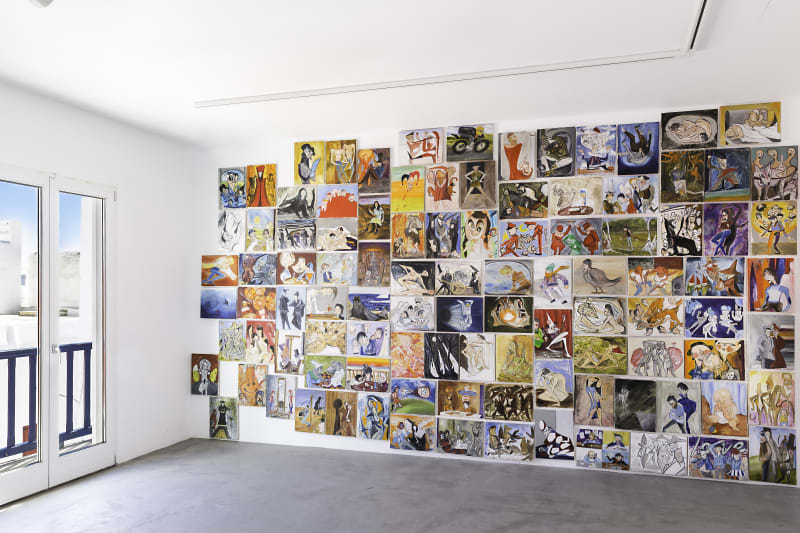Alexander Ruthner’s paintings for Volume 1, more than 100 so far, are like the prolific pages of a diary, fraught with intensity yet brief and ephemeral, and to be continued.
Austrian visual artist Alex Ruthner returns to Dio Horia in Mykonos for his first solo exhibition with Dio Horia Gallery. The exhibition Volume I is the result of 109 works produced over the course of the pandemic and will be opening on June 12 in the presence of the artist.
Alex Ruthner’s artistic practice consists of paintings and digital collages. Ruthner’s work has no definitive statements. They are open-ended questionings and provocations initiating conversations about a fragmented world. Technically, there is as as much subtraction as addition, as much synthesis as analysis in his practice.
During the past year and half, Ruthner created Volume I or else a constellation of 109 paintings, that are presented at a small room on the first floor at Dio Horia Gallery, crowded on the wall, in a visually raucous rabble so animated it is almost audible. The scenes almost levitate as if waiting to be placed into a meaningful narrative. Still each episode resounds on its own with uncanny familiarity, as if taken from a story we know or have heard of, or even happened to us. Although the scenarios may be inspired by incidents from the artist’s own life, they are rendered in a vivid allegorical language employing symbolism, literary archetypes, and darkly comic caricatures that lend them the quality of fairytales. Produced over the course of the pandemic, the painting series was triggered by notes Franz Kafka scribbled on pieces of paper, later referred to as aphorisms, while convalescing with the fatal tuberculosis in West Bohemia.
During the past year, we have all been compelled to be armchair travellers for a time, surfing the Internet in search of succour and sympathy, and the meaning of life. Just as a single aphorism inspires myriad insights and interpretations, Ruthner’s Volume I paintings take on different meanings in the psychic terrain of each viewer. Images by nature speak volumes more than words, which have too much resting on too little—they must be precise enough or die off. Images are more like experiences; we can experience ourselves in these pictures. Reflecting the fragmented way we see the world through the screen of the computer, the mesmerizing installation of Volume 1 forces us to select the things that suit our viewpoint. So, the narrative is yours to write, composing the frames of the storyboard into your own tragicomedy. As in Ruthner’s epic volume, to be continued, the protagonist is always you.
Ultimately Volume I, is an instruction manual on how to read reality.
A catalogue with texts by Cathryn Drake and Josefine Hübler accompaniesthe exhibition. Parts of their texts have been used for this press release.
